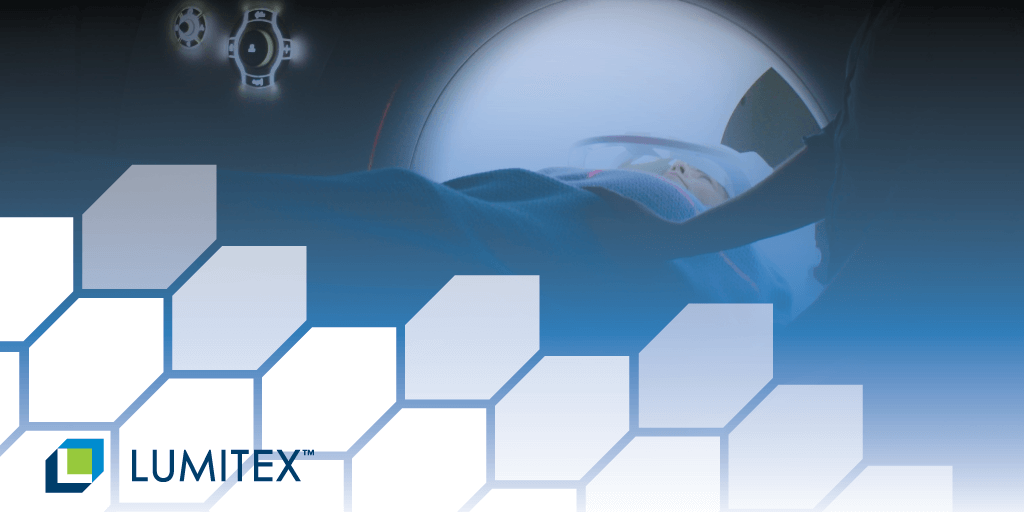
Ever been told you need to have an MRI?
For many people, the thought of a dark, loud and confined space is too much to handle.
In fact, a study involving an MRI diagnosis and claustrophobia, found up to 13% of patients receiving an MRI reported having a panic attack during the procedure. In a NIH study on MRIs and claustrophobia, a total of 95 patients (1.97%) suffered from claustrophobia and 59 (1.22%) prematurely terminated the examination due to claustrophobia.
As a leading custom medical lighting manufacturer, our passion is to help alleviate the anxiety and help improve patient comfort with the addition of interior lighting into an MRI bore.
Bonus Content: 11 Things to Consider When Adding Fiber Optic Lighting in Your MRI System as a PDF checklist.
Get the PDF version to save to your desktop and read it when it's convenient for you.
(No email required):
What is an MRI?
Magnetic resonance imaging (MRI) technique is widely used for a detailed, non-invasive diagnostic imaging of various parts inside the body.
"MRI uses a strong magnetic field and radio waves to create detailed images of the organs and tissues within the body." It is a painless procedure and can last from 20-60 minutes depending on the area being scanned.
MRI Uses
In general, an MRI will give more and different information than what can be seen with an X-Ray or CT scan.
William C. Shiel JR., MD, FACP, FACR, "Magnetic Resonance Imaging (MRI Scan), Medicine.Net.com , states "An MRI scan can be used as an extremely accurate method of disease detection throughout the body and is most often used after the other testing fails to provide sufficient information to confirm a patient's diagnosis."
Neurosurgeons use an MRI scan not only in defining brain anatomy but in evaluating the integrity of the spinal cord after trauma. It is also used when considering problems associated with:
- the vertebrae or intervertebral discs of the spine.
- evaluate the structure of the heart and aorta
- on glands and organs within the abdomen
- structure of the joints
- soft tissues
- bones of the body
What Happens During an MRI Scan?
"During the scanning process, you will be inside the scanner (the tunnel-like scanning machine). You will hear clicking or banging noises as the magnetic field is altered as part of the normal exam process. The banging varies in time and in loudness, sometimes occurring rapidly and sometimes just occasionally. The sounds are part of every MRI exam."
The noises alone can scare you, but knowing what to expect may relieve some of your anxiety.
Now for the scientific explanation...
An MRI scanner contains two powerful magnets; these are the most important parts of the equipment.
"The human body is largely made of water molecules, which are comprised of hydrogen and oxygen atoms. At the center of each atom lies an even smaller particle called a proton, which serves as a magnet and is sensitive to any magnetic field.
Normally, the water molecules in our bodies are randomly arranged, but upon entering an MRI scanner, the first magnet causes the body's water molecules to align in one direction, either north or south.
The second magnetic field is then turned on and off in a series of quick pulses, causing each hydrogen atom to alter its alignment and then quickly switch back to its original relaxed state when switched off. The magnetic field is created by passing electricity through gradient coils, which also cause the coils to vibrate, resulting in a knocking sound inside the scanner.
Although the patient cannot feel these changes, the scanner can detect them and, in conjunction with a computer, can create a detailed cross-sectional image for the radiologist to interpret." source (What you should know about MRI Scans).
Healthcare physicians and medical staff know the importance of patient comfort during MRI/imaging procedures. LED lighting for MRI imaging suites can have a big impact on your patients.
Remote light sources using fiber optic lighting (in the MRI bore) can offer greater patient comfort.
11 Considerations When Adding Fiber Optic Lighting in Your MRI Machines
Adding interior lighting will contribute to a patients' ease and relaxation as they enter and remain in the MRI chamber. It also helps the medical clinicians properly position a patient for their scan.
Things to Consider When Including Light in Your MRI System
1: Lighting system cannot introduce magnetic or electronic interference during the scanning process.
2: Lighting must not contribute noise or heat.
3: Thin flat panels enclosed in a plastic conduit can be mounted inside each MRI bore tube.
4: You can permanently affix the flat panels with double-sided adhesive foam tape.
5: The fiber optics system must be constructed of all-plastic, all nonferrous materials.
6: Depending on the application, the panels are constructed of 1 to 6 woven layers.
7: The panels are assembled using clear laminates.
8: A reflective layer is attached to one side of the panel to provide single sided light emissions and higher intensity.
9: Your light source should travel from a remote light source to the mounted strips.
10: To deliver lighting extremely thin acrylic (PMMA) fibers should be bundled together into a round cable.
11: The fixed end of the cable will be attached to the light source.
Adding light can have its challenges if it introduces any electronic interference during a scan.
The use of fiber optics can deliver reassuring light without contributing heat or magnetic interference.
Light strips are thin and fit into the bore tube without compromising patient space. The light panels generate a cool lighting effect that makes some patients feel like they are actually in a larger space.
Conclusion
Creating a comforting environment is the goal of any MRI suite. Lighting can become a challenge because of the scanning equipments sensitivity to electromagnetic interference.
MRI scans can reveal life-saving information that other tests cannot. Today's technology can greatly increase patient comfort at a relatively low cost.
MRI machines that have comfort lighting can reduce the anxiety of long MRI exams and provide a benefit for the clinician and patient. Advances continue to be made as lighting choices and illumination become smarter.




Comments